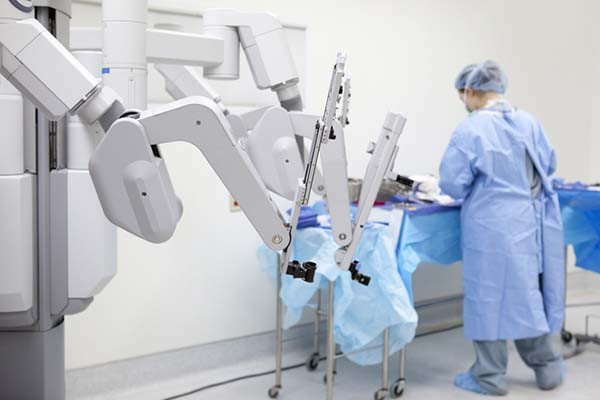
Introduction:
Abortion surveillance is a critical component of public health monitoring, providing essential data on the incidence, characteristics, and outcomes of induced abortions. It encompasses the systematic collection, analysis, and dissemination of information related to abortion procedures, enabling policymakers, healthcare providers, and researchers to understand trends, assess the impact of policies, and inform evidence-based interventions in reproductive health.
History and Evolution of Abortion Surveillance:
The practice of monitoring abortion statistics dates back to the mid-20th century when several countries began collecting data on induced abortions to inform public health policies and address concerns about maternal mortality and morbidity associated with unsafe abortion practices. Over time, the scope and methods of abortion surveillance have evolved, reflecting changes in abortion laws, advances in medical technology, and shifts in public health priorities.
In the United States, the Centres for Disease Control and Prevention (CDC) initiated national abortion surveillance efforts in the late 1960s, compiling data from state health departments on the number and characteristics of abortions performed annually. Similarly, other countries, including Canada, Australia, and European nations, have established abortion surveillance systems to monitor abortion trends and inform reproductive health policies.
Components of Abortion Surveillance:
Abortion surveillance encompasses several key components:
Data Collection: Public health agencies, healthcare facilities, and relevant organizations collect data on induced abortions performed within their jurisdiction. This may include information on the number of abortions, demographic characteristics of women seeking abortions, gestational age at the time of abortion, and method of abortion.
Reporting Systems: Establishing reporting mechanisms for healthcare providers to report abortion procedures and associated data to public health authorities. This may involve electronic reporting systems, standardized forms, or other means of data submission.
Data Analysis: Analysing collected data to identify trends, patterns, and disparities in abortion rates, demographics of women seeking abortions, reasons for abortion, and other relevant factors. Statistical methods and epidemiological techniques are used to analyse surveillance data and generate insights into abortion practices.
Dissemination of Findings: Sharing findings from abortion surveillance with policymakers, healthcare providers, researchers, advocacy groups, and the public through reports, publications, presentations, and other communication channels. This dissemination helps to inform public discourse, guide policy development, and promote evidence-based interventions in reproductive health.
Quality Assurance: Implementing measures to ensure the accuracy, completeness, and confidentiality of abortion surveillance data. This may involve training healthcare providers on data reporting protocols, conducting audits or quality checks on reported data, and safeguarding patient privacy.
Evaluation of Interventions: Assessing the impact of policies, programs, and interventions aimed at reducing unintended pregnancies, improving access to contraceptive services, and addressing barriers to safe and legal abortion care. Abortion surveillance data can inform the evaluation of interventions and guide efforts to enhance reproductive healthcare access and outcomes.
Importance of Abortion Surveillance:
Abortion surveillance plays a crucial role in advancing public health objectives related to reproductive health and rights. Some key reasons why abortion surveillance is important include:
Monitoring Trends: Abortion surveillance enables the tracking of trends in abortion rates, demographics of women seeking abortions, and characteristics of abortion procedures over time. This information helps to identify emerging issues, assess the effectiveness of interventions, and guide resource allocation in reproductive health programs.
Assessing Public Health Impact: By monitoring abortion incidence and outcomes, abortion surveillance provides insights into the public health impact of abortion policies, access to reproductive healthcare services, and disparities in abortion access and utilization. This information can inform efforts to address inequities and improve health outcomes for women.
Informing Policy and Practice: Data from abortion surveillance informs the development, implementation, and evaluation of policies and programs aimed at promoting reproductive health, preventing unintended pregnancies, and ensuring access to safe and legal abortion care. Policymakers rely on surveillance data to make evidence-based decisions and advocate for reproductive rights and autonomy.
Protecting Women’s Health and Rights: Abortion surveillance contributes to efforts to protect women’s health and rights by providing evidence on the safety, accessibility, and quality of abortion services. Surveillance data can identify gaps in healthcare access, barriers to abortion care, and areas for improvement in reproductive health policies and practices.
Challenges and Limitations:
Despite its importance, abortion surveillance faces several challenges and limitations, including:
Incomplete Reporting: In some jurisdictions, underreporting or incomplete reporting of abortion data may occur due to legal restrictions, privacy concerns, stigma surrounding abortion, and lack of standardized reporting protocols. This can affect the accuracy and reliability of surveillance data and hinder efforts to monitor abortion trends effectively.
Variability in Data Collection: Abortion surveillance systems vary in terms of data collection methods, definitions, and reporting requirements across different jurisdictions and healthcare settings. This variability can complicate data comparison and analysis and limit the generalizability of findings.
Access to Data: Access to abortion surveillance data may be restricted due to confidentiality concerns, data sharing agreements, and legal or regulatory barriers. Limited access to data can hinder research efforts, advocacy initiatives, and public health responses related to abortion.
Political and Ideological Factors: Abortion surveillance may be influenced by political, ideological, and cultural factors, which can shape the collection, analysis, and use of abortion data. Political polarization and debates over abortion rights and access may affect the funding, support, and prioritization of abortion surveillance efforts.
Future Directions:
To address these challenges and enhance the effectiveness of abortion surveillance, several strategies can be considered:
Standardization of Data Collection: Promoting standardization of abortion surveillance methods, definitions, and reporting protocols to improve data comparability, consistency, and quality across jurisdictions and healthcare settings.
Strengthening Reporting Systems: Enhancing reporting systems for healthcare providers to facilitate timely and accurate reporting of abortion procedures and associated data to public health authorities. This may involve streamlining reporting processes, providing training and resources to healthcare professionals, and ensuring confidentiality and privacy protections.
Collaboration and Coordination: Promoting collaboration and coordination among public health agencies, healthcare providers, researchers, and advocacy groups to strengthen abortion surveillance efforts, share best practices, and address common challenges.
Community Engagement and Education: Engaging communities in discussions about abortion surveillance, reproductive health data, and the importance of evidence-based policymaking. Education and outreach efforts can help reduce stigma, promote transparency, and build support for abortion surveillance initiatives.
Conclusion:
Abortion surveillance is a vital tool for advancing public health goals related to reproductive health and rights. By monitoring abortion trends, assessing the impact of policies and interventions, and informing evidence-based strategies, abortion surveillance contributes to efforts to promote women’s health, prevent unintended pregnancies, and ensure access to safe and legal abortion care. Addressing challenges and investing in strengthening abortion surveillance systems can enhance their effectiveness and support informed decision-making in reproductive health policy and practice.










